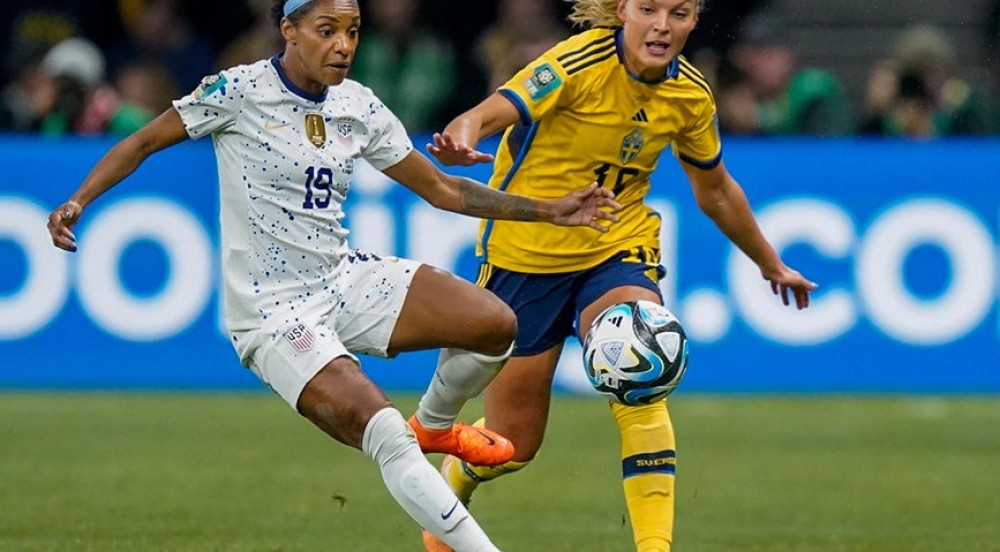Team USA's World Cup journey has come to an unexpected close, concluding their pursuit of soccer history far sooner than anyone could have anticipated. Despite the pre-tournament excitement, the US Women's National Team experienced their least successful performance in any major competition, a marked departure from their consistent top-three finishes in the past.
The USWNT's hopes for a historic three-peat at the 2023 FIFA Women's World Cup were dashed early Sunday morning when Sweden emerged victorious during their Round of 16 match. The game remained deadlocked at 0-0 even after extra time, leading to a penalty shootout. Team USA faltered, missing three crucial penalties, setting the stage for Sweden's contentious final penalty.
Initially, it appeared that US Women's National Team goalkeeper Alyssa Naeher had made a clean save, batting Lina Hurtig's penalty into the air. However, after a thorough review, the referees determined that the ball had indeed crossed the line, awarding Sweden the win. The defeat was undoubtedly heart-wrenching, yet for most observers of Team USA's performance throughout this World Cup, signs of their challenges were evident. Beyond their convincing 3-1 victory against Vietnam in the opening match, the team struggled to find their rhythm in subsequent games, particularly in front of the net.
But the answer everybody is trying to figure out is why? Could it have been attributed to the team's youthfulness? This iteration of Team USA boasted the youngest lineup ever, spanning a staggering 20-year age gap between its oldest player, Megan Rapinoe, and its youngest, Alyssa Thompson. Alternatively, were injuries a deciding factor? The USWNT had to contend with the absence of at least four potential starters due to injuries, although it's worth acknowledging that injuries are a challenge faced by many teams.
Having clinched back-to-back Women's World Cup Championships, the US women might have unintentionally underestimated the competition they faced.

It was a culmination of these factors that contributed to the overall struggle, but it ultimately boils down to the fact that this moment was too big for Team USA. The pressure of representing their country and making soccer history ended up breaking them. In their match against Sweden, the USWNT managed an impressive 22 total shots, with 11 of them on target, yet failed to convert a single one. In contrast, Sweden managed just one shot on goal throughout the match.
Struggling to finish at the net, especially when that has never been a struggle for the team before, was a dead giveaway of their nerves. The USA's most potent attribute is the prowess of their world-class strikers, and they all vanished when it mattered most. Despite being armed with Trinity Rodman, Sophia Smith, and more A-grade strikers, the USWNT's goal-scoring ability had mysteriously evaporated. This shortfall became evident in their tightly contested 1-1 draw against the Netherlands and another draw against a considerably weaker Portugal side. Escaping the group stages was a narrow affair, and sadly, their luck ran out against Sweden, and as a consequence, their World Cup dreams were shattered.
Yet, amidst the disappointment, there's a glimmer of hope. The silver lining lies in Team USA's youthful roster that garnered precious experience from this challenging tournament. The lessons learned will undoubtedly contribute to their growth as a team as they return in the future.
Looking ahead, a significant test awaits in less than a year—the Summer Olympics. While not on par with the grandeur of the FIFA World Cup, the Olympics stands as the next premier international soccer event.
The question looms: can Team USA embark on a path of redemption in Paris next summer, or will the weight of expectations once again prove to be their undoing?












